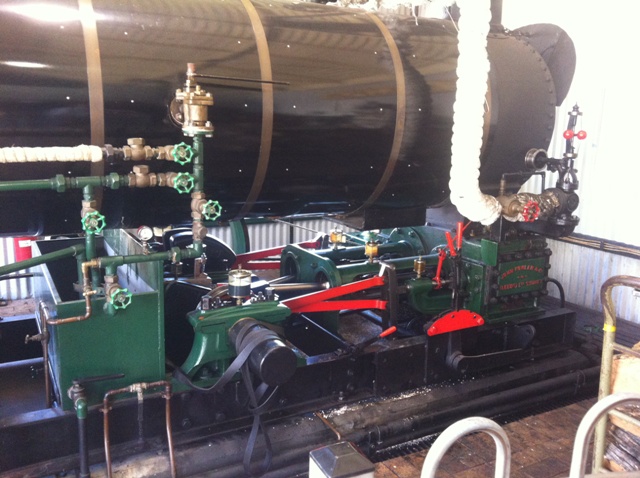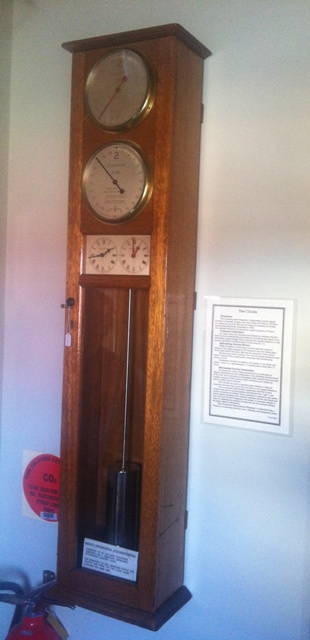Published: 11 March 2013
I had a chance to visit, and got a two hour guided tour which still left most of the stuff to see next time. It is near the end of the main street, Peel St, and was a Bicentennial project based on the fact that in 1888 Tamworth had the first municipal electric street lighting in Australia.
The original powerstation was long gone, but in 1986 the Council decided to try to rebuild it on the original site. Amazingly, they were able to locate two John Fowler undertype steam engines of the correct type and a couple of suitable boilers (which fit on top of the engines). There was no hope of finding a dynamo of the correct type so two 18 kW working replicas were constructed locally on the basis of 19th century sketches. Subsequently drawings have surfaced confirming the accuracy of the replicas, and another steam engine and generator similar to one used later has been obtained. All these are operated from time to time. Unfortunately not while I was there, but I did see the official Inspector of Boilers checking them out.


The original 1907 Municipal Electric Showroom now fronts a museum of all things electrical from measuring instruments through lamps and domestic appliances. It is not an enormous space but there are many thousands of items on display. The horological highlight is a Smiths-Synchronome powerstation frequency checking clock. The one on display came from Hay but Tamworth had one in the day. The clock has multiple dials so that the time from the Synchronome clock part can be compared with the time from an AC synchronous motor clock (Smiths) running on the mains supplied by the powerstation. If the latter got ahead they slowed down the alternators a bit for a while, and if it got behind, they speeded them up. That way, everybody’s clocks were correct and all the equipment was happy working at the frequency it was designed for. Because the Synchronome clock normally impulses only every half minute, this one is fitted with a seconds counter. A magnet attached to the pendulum attracts a set of contacts together each time it swings past to drive a large two minute dial.

Down the back there are some other mains clocks but what really caught my attention was an original Reason electrolytic watthour meter. The Reason Manufacturing Company in Brighton, England is where Thomas Murday worked before coming to Australia in 1911 to run the workshop at Prouds Electric Clocks and Scientific Instruments in Sydney. There was also a recording ammeter with a Murday patent recording pen. It was made by Elliott Brothers, another former Murday employer. And there was a whole series of very well made electrical instruments by J. Durst, Sydney, whom I have never heard of before.

The Museum is open 9am-1pm, Wednesday- Saturday. Highly Recommended.